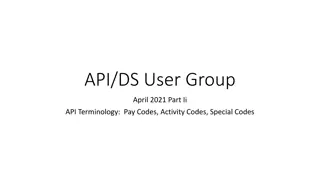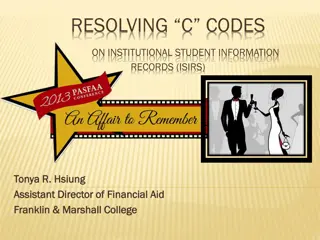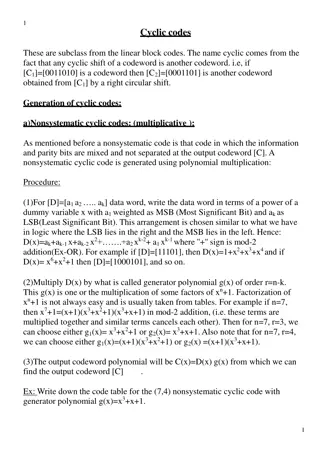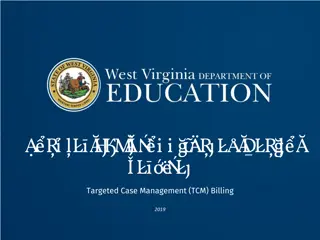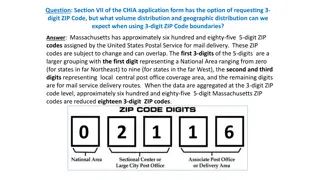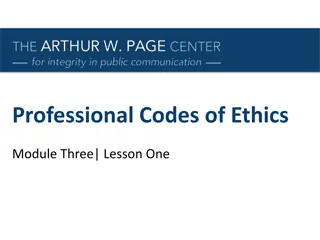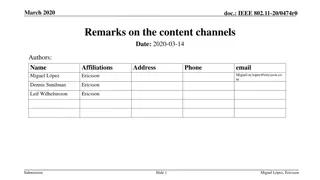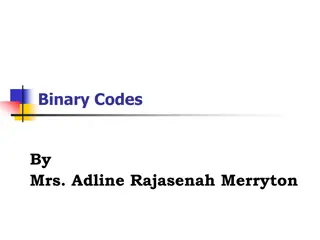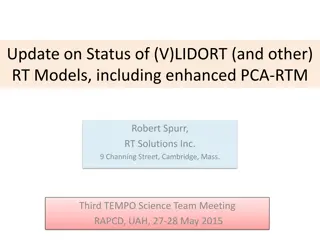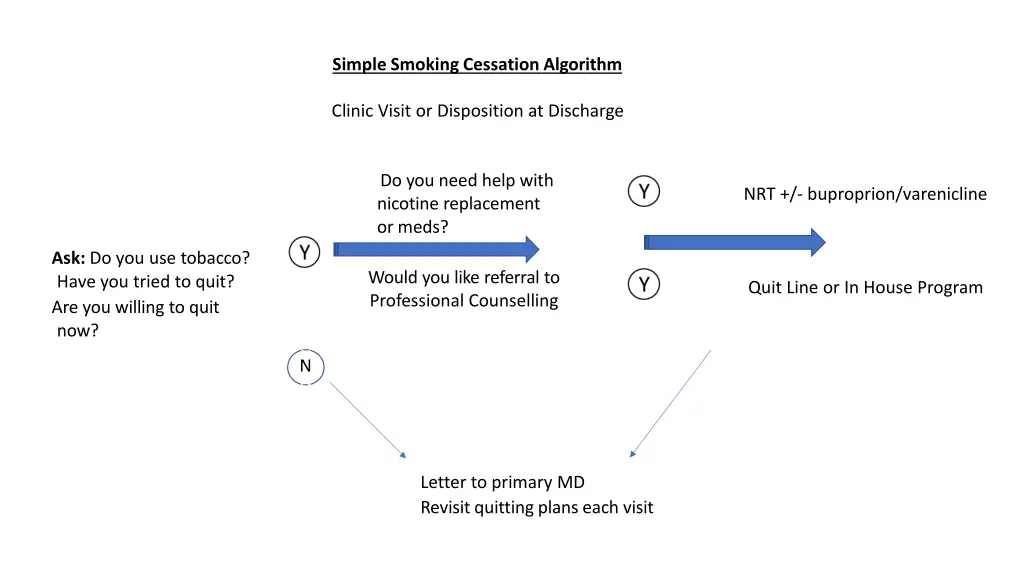
Smoking Cessation Information and Codes for Healthcare Providers
Learn about a simple smoking cessation algorithm for clinic visits, billable codes for smoking cessation counseling, and examples of documentation for reimbursement. Understand the importance of addressing tobacco use and offering support for patients looking to quit smoking.
Download Presentation

Please find below an Image/Link to download the presentation.
The content on the website is provided AS IS for your information and personal use only. It may not be sold, licensed, or shared on other websites without obtaining consent from the author. If you encounter any issues during the download, it is possible that the publisher has removed the file from their server.
You are allowed to download the files provided on this website for personal or commercial use, subject to the condition that they are used lawfully. All files are the property of their respective owners.
The content on the website is provided AS IS for your information and personal use only. It may not be sold, licensed, or shared on other websites without obtaining consent from the author.
E N D
Presentation Transcript
Simple Smoking Cessation Algorithm Clinic Visit or Disposition at Discharge Do you need help with nicotine replacement or meds? NRT +/- buproprion/varenicline Ask: Do you use tobacco? Have you tried to quit? Are you willing to quit now? Would you like referral to Professional Counselling Quit Line or In House Program N N N Letter to primary MD Revisit quitting plans each visit
Smoking Cessation Billable Codes Simply stating time spent counselling patient on quitting smoking in EHR will be insufficient for reimbursement Items to include for documentation: Patient s current tobacco use Advice to quit and impact of smoking Assessed willingness to attempt to quit Provide methods and skills for cessation Medication management-OTC and prescription Resources provided Setting quit date Follow up arranged Time spent counselling patient ICD -10 Codes F17.219: cigarette dependence F17.229: smokeless dependence CPT Codes 99406 Intermediate: 3-10 minutes 99407 Intensive: >10 minutes
Smoking Cessation Billable Codes Example intermediate version: 3-10 minutes for CPT 99406 I explained to the patient the effects of smoking including peripheral artery disease, coronary artery disease, cerebrovascular disease as well as cancer and chronic obstructive pulmonary disease. I asked the patient to stop smoking immediately. It is never too late to quit, and many studies show significant health benefits as well as economical savings after smoking cessation. I offered to the patient nicotine replacement therapy as well as referral to the smoking cessation program and access to the quit line. I spent 5 minutes discussing with the patient the importance of complete smoking cessation and tools that can help in achieving it. Courtesy of Dr. Cassius Ochoa Chaar
Smoking Cessation Billable Codes Example Intensive version: > 10 minutes for CPT 99407 "Tobacco use is a significant patient-modifiable risk factor for this patient s vascular disease with multiple vascular comorbidities, and a significant risk factor for failure of and complications from any endovascular or surgical interventions. I reinforced this with the patient and urged complete and lasting smoking cessation. I discussed methods and skills for cessation and offered medications including but not limited to nicotine replacement therapy. Based on our conversation, this patient {does not appear ready to quit/expresses a passive interest in quitting but does not appear very motivated to quit/appears motivated to quit} and {declined my offer of nicotine replacement or tobacco cessation medications/plans to use nicotine replacement to help quit/plans to use prescription medication to help quit/plans to quit without nicotine replacement or medications}. The patient {did not set a quit date/set a quit date of _}. I will continue to follow up on this issue at our next scheduled visit. I spent approximately xx minutes on tobacco cessation counseling with this patient." Courtesy of Dr. Greg Westin



